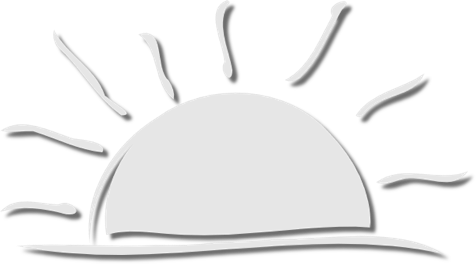|
Original Article
"Hoodies or Hoodlums?"- An Investigation of Hoodies on the Perception of Character
Alyssa Dioguardi
J. Dawn. Research, Vol. 2, pp 59-70, 2020
The everyday effects of stereotyping are frequently discussed by social and behavioral psychologists, and the purpose of this study was to evaluate the effect of clothing on perception. More specifically, this study tested the hypothesis that a preexisting stigma associated with hoodie wearing facilitates biases in judgement. Participants were presented with one of four image sets- hooded male, unhooded male, hooded female, and unhooded female- and were asked to address the personality, behavior, and future goals of the displayed individual in a short paragraph. Pennebaker’s Linguistic Inquiry Word Count (LIWC), an online linguistic analyzer, was employed to justly quantify participants’ responses. The program enabled the creation of terminology dictionaries separating utilized language into categories of "education/career," "illegal/socially rejected" behavior, and "sports" terminology. […]
|
Original Article
Examining Functions under Quasi-Stereographic Projections
Viraj Jayam
J. Dawn. Research, Vol. 2, pp 51-58, 2020
We consider a generalization of Stereographic Projections, to be called "Quasi-Stereographic" Projections. These refer to projections from compact Riemann surfaces to the a plane that intersects the surface. We will observe behavior of functions, such as polynomials, when this projection is applied. This includes approximating integrals of functions via projecting the function onto the Riemann Sphere. We will also briefly consider when the surface is not compactable and mention briefly about higher dimensional Quasi-Stereographic Projections. […]
|
Original Article
A Comparison of Photocatalysis and Electrocoagulation for Azo Dye Treatment and a Novel Use of H2 PEM Fuel Cells for Simultaneous Renewable Energy Generation
Ethan Horowitz, Josh De Leeuw
J. Dawn. Research, Vol. 2, pp 35-49, 2020
Textile dyes are a major contaminant in water, but many removal methods require large amounts of energy. Our study's purpose was to optimize two removal processes- photocatalysis and electrocoagulation- and measure the amount of energy that could be generated during electrocoagulation using the byproduct hydrogen gas. pH, catalyst concentration, and dye concentration were tested for photocatalysis; voltage, pH, and dye concentration were tested for electrocoagulation, and a novel method with 3D printed-lids and hydrogen fuel cells was used to generate energy. Photocatalysis was successful across almost all parameters, and the optimized process - pH 9, 0.1 g/L TiO2, and 50 mg/L of methyl orange- broke down 97.8% of all dye. Electrocoagulation broke down over 98% of dye at 5V, pH 7, and 50 mg/L methyl orange. The novel energy recapture process recovered up to 20% of the energy put into electrocoagulation, doubling the hypothesis, meaning it could be used in the future to make electrocoagulation 20% more efficient. Electrocoagulation was 6.44 times more energy efficient than photocatalysis and 35%-46% more cost-effective than traditional methods. […]
|
Original Article
Soil Moisture Sensing Robot: A Novel Agricultural Device
Maya L. Maciel-Seidman, Ruchitha Channapatna, Suchitha Channapatna
J. Dawn. Research, Vol. 2, pp 15-33, 2020
With less farming space and water available globally, it is important to optimize the growth of crops. Agricultural production, including the quality and quantity of produce, is highly dependent on soil moisture. If soil moisture is not accurately measured, inappropriate watering of crops could lead to crop failure, and wasted space, seeds, and money. Current methods to check moisture include inaccurate qualitative observations, inconvenient hand-held sensors, and unaffordable wireless systems. To construct a cost efficient, accessible, and convenient device to maximize crop production for all farmers, a robot equipped with an Arduino-powered soil moisture sensor was prototyped. This radio-controlled robot can be driven to various locations, where a 3D printed arm inserts the moisture sensor into soil. The readings collected were logged through the program TeraTerm and imported into a color-coded spreadsheet, where users can easily view soil moisture levels. […]
|
Review Article
A study of law and ethics in local and global medical
practices
Vaishnavi Vasishta
J. Dawn. Research, Vol. 2, pp 3-13, 2020
Determining ethical standards is often quite difficult to do as it is largely a subjective topic. Some industries, such as the medical industry, encounter more ethical dilemmas than others. Due to the emergence and rapid evolution of biotechnology and its increasing applications, devising and maintaining ethical standards has become a crucial as well as a very delicate topic. For this reason, ethical standards within the medical field are maintained by both doctors and lawyers. This review paper compares and evaluates the ethical principals followed in both a local Indian-originated medical practice of Ayurveda and the more widespread practice of Allopathic medicine. […]
|
Editorial
The Value in Pursuing and Publishing Highschool Research, Especially in a Time of COVID
Bonnie A.B. BLACKWELL
J. Dawn. Research, Vol. 1, pp 1-5, 2020
Now that many elite colleges and universities have recently been waiving or ignoring the need for ACT or SAT scores, ways to distinguish yourself from all the other highschool students has become more essential if you are going to be accepted to an elite post-secondary school. The COVID pandemic has exacerbated the problem as access to NYS Regents, AP, SAT II, and other exams become more difficult to find, and virtual classes often give only P/F grades, more students tend to look more alike on paper in their college applications. COVID has also caused most highschool athletics competitions and many other activities to be cancelled or curtailed significantly. Thus, your résumé may look very thin and ordinary when you apply to "college". […]
|
|
|

 This work is licensed under a Creative Commons Attribution 4.0 International License.
This work is licensed under a Creative Commons Attribution 4.0 International License.
